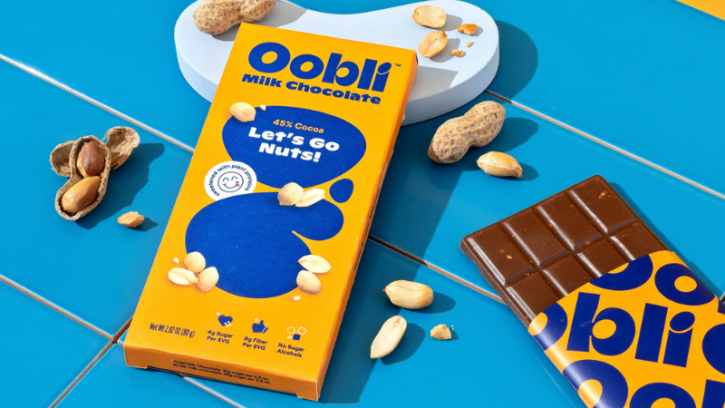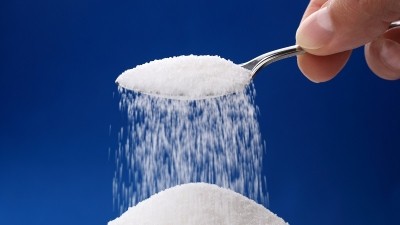Oobli expands sweet protein chocolate line, taps into permissible indulgence trend

“We think it's important that we help consumers. One of the reasons we really put an emphasis on our own products is showing not just B2B and not just the big CPG [companies] that we can make great tasting [products], but also helping consumers start to have this association that proteins can do more than build muscle because most consumers are actively trying to reduce sugar and yet are failing at it based on their understanding on the [Nutrition Facts Panel] or on ingredients... So, a big part of what we're trying to do with our own brand is education.”
From ice teas to chocolates: Oobli demonstrates sweet proteins' capabilities
The milk chocolate bars are formulated with Oobli’s sweet proteins, which are created by precision fermentation, contain 45% cocoa, and are available in Cocoa Dreams, Let's Go Nuts! Crisp'n rice flavors. Additionally, the company has relaunched its dark chocolate line with new flavors, including Sweet'n Salty, Silky Smooth, Almond Toasty, and Razzle Dazzle (raspberry).
As it launched its a portfolio of tea beverages, Oobli tested its sweet protein in a small chocolate launch to demonstrate the use of the ingredient to consumers, Wing said. Following initial consumer reactions, the company saw an opportunity to bring a better-for-you chocolate bar to a wider audience, she added.
“It's easier to talk about sweets when you just show [consumers] a confectionery, and so we did a small dark chocolate run last year, and it was very good. We just were surprised at how excited people were about it. ... Maybe people were ahead of us on the permissible indulgence,” Wing said. “What we heard is people [saying], ‘You're kidding me, you can actually give me one that tastes great, that doesn't taste [like reduced-sugar products] and does good.'”
Oobli not only had to prove to consumers that sweet proteins can satisfy their sweet tooth, but they also needed to show the industry that sweet proteins can fill the functional role of sugar, she said.
In a typical chocolate bar, sugar accounts for about half the size and serves as the primary bulking agent, Wing noted. Oobli was able to deliver on the taste and texture of chocolate by using its sweet protein with chicory root and tapioca fibers, which also provide 10g of dietary fiber per 32g serving, she added.
“The only role of sugar in a drink is sweetness. In chocolate, it's a very different problem to show the market that sweet proteins can be a solution for [sugar reduction] because when you take it out, sugar is playing a lot more roles than just sweetness. On a typical chocolate bar, it's about half the size of the bar. It's the bulking, so we really had to say, ‘All right why don't we take the other end of the spectrum and show everybody you actually can do this’ and build those permissible indulgences with better ways.”
Demand for low- and no-sugar increases, food returns to its functional roots
The release of the chocolates comes at a time of increased consumer demand for low- and zero-sugar products, and global health regulators and agencies look to reduce sugar consumption to curb myriad health crises. While acknowledging that one ingredient isn't solely to blame for today's health crises, Wing noted sugar reduction is helping consumers get back to a healthier diet.
“We're sort of out of balance with what's in our diets in maybe a recklessly abundant level now because we are designed to crave sugar, but we weren't designed to have it so easily available. We used to have to work for it and go get a tuber or a root, and now we can turn to it in everything, and we can have as much [sugar at] breakfast as we have ... in in our cupcakes for a birthday party, and that is a shift.’”
At the same time, consumer demand for products to do more is boosting the growing functional food and beverage segment. The global functional food and beverage market is projected to reach $532.98bn by 2030, growing at an 8.9% CAGR from 2023 to 2030, according to Meticulous Market Research data.
Though functionality is trending, it similarly represents a return to how consumers think and consume foods, focusing on nutritional content, Wing said.
“What we're now calling functional beverages, functional foods, it's really us coming back to say, ‘Wait a minute, everything in there should count.’ It should count for more than just accomplishing a taste profile. What we eat is fueling our bodies.”



